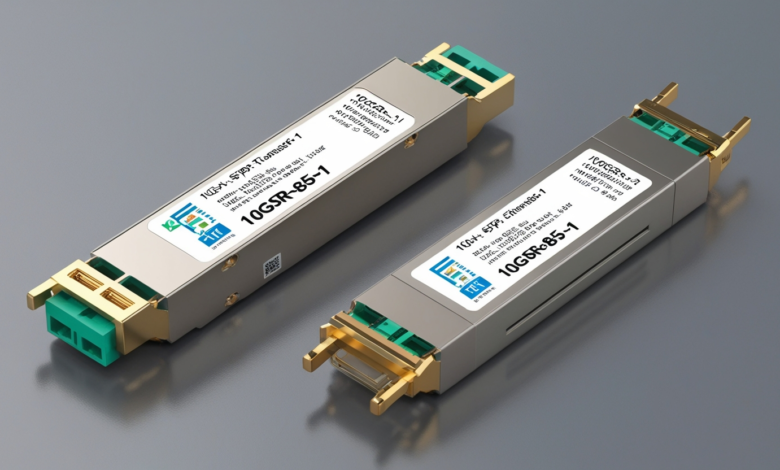Understanding what is the difference between a 10GSR-85-1 and a 10GLR31-I: A Simple Guide

When comparing electronic components, you may wonder what is the difference between a 10GSR-85-1 and a 10GLR31-I. These two terms might seem similar, but they have important distinctions that are worth exploring. Both the 10GSR-85-1 and the 10GLR31-I play specific roles in different electronic systems, and understanding these differences can help you choose the right one for your needs.
In this blog, we will break down what is the difference between a 10GSR-85-1 and a 10GLR31-I in simple terms. We’ll talk about what each one does, how they are used, and which one might be better for certain situations. By the end of this post, you’ll have a clear understanding of these components.
Understanding the Difference Between a 10GSR-85-1 and a 10GLR31-I: A Simple Guide
If you’re wondering what is the difference between a 10GSR-85-1 and a 10GLR31-I, you’ve come to the right place. These two terms may look similar, but they serve different functions in the world of electronics. Understanding their differences can help you make the best choice for your specific needs.
In this post, we will explain what is the difference between a 10GSR-85-1 and a 10GLR31-I in simple words. Whether you are new to these components or just need a refresher, this guide will help you know what each part does and when to use them.
What Are the 10GSR-85-1 and 10GLR31-I?
The 10GSR-85-1 and 10GLR31-I are both types of electronic components used in various technology systems. The 10GSR-85-1 is typically used in high-speed data transfer applications. It is known for its ability to handle large amounts of data efficiently, making it a popular choice for systems that require fast communication between devices.
On the other hand, the 10GLR31-I is designed for more general purposes and lower speed applications. It is reliable in simpler systems where high-speed data transfer is not necessary. Knowing these differences helps users understand how these components fit into different types of electronic setups.
Both of these components have specific roles in the technology world, and their functions vary based on the requirements of the system they are used in.
Key Differences Between 10GSR-85-1 and 10GLR31-I
When comparing the 10GSR-85-1 and the 10GLR31-I, it’s clear they are meant for different types of tasks. One of the main differences is their speed. The 10GSR-85-1 can handle faster data transfer, making it suitable for high-performance systems, while the 10GLR31-I is more suited for systems that do not need as much speed.
Another important difference is the complexity of their applications. The 10GSR-85-1 is typically used in complex systems that demand more processing power, such as data centers or high-speed networks. In contrast, the 10GLR31-I is commonly found in less demanding systems like household electronics or small-scale networks.
The design of these components also differs slightly, which affects their performance and how they are used in various devices.
Where Are 10GSR-85-1 and 10GLR31-I Used?
The 10GSR-85-1 is used in advanced systems that require fast and efficient data transfer. This includes applications such as data storage centers, high-speed internet connections, and telecommunications systems. The high-speed nature of the 10GSR-85-1 makes it ideal for handling heavy data loads without causing delays or system slowdowns.
On the other hand, the 10GLR31-I is more commonly used in smaller, less complex systems. It can be found in devices like routers, simple computing systems, and other electronics that do not require rapid data transfer. The 10GLR31-I works well in everyday devices where speed is not the top priority but reliability is essential.
Choosing the right component depends on what your system needs. If you need speed, the 10GSR-85-1 is a better choice, while the 10GLR31-I works for systems with lighter demands.
Which Is Better: 10GSR-85-1 or 10GLR31-I?
The decision between the 10GSR-85-1 and the 10GLR31-I depends on the type of system you’re working with. For high-performance tasks that require fast data transfer, the 10GSR-85-1 is the better option. Its ability to manage large amounts of data quickly makes it the go-to choice for systems like data centers and large networks.
However, for more basic tasks, the 10GLR31-I is a solid option. It performs well in simpler systems and provides the necessary reliability for low-speed data transfers. If your system does not require fast processing, the 10GLR31-I will likely meet your needs without the higher costs associated with more advanced components.
Factors to Consider:
- Speed: The 10GSR-85-1 is faster, ideal for data-heavy systems.
- Cost: The 10GLR31-I is generally more affordable for basic applications.
- Application: Use the 10GSR-85-1 for high-demand systems; choose the 10GLR31-I for simpler setups.
FAQs About the 10GSR-85-1 and 10GLR31-I
Many people have questions about the difference between a 10GSR-85-1 and a 10GLR31-I. Knowing the answers to these can help make the decision easier when choosing the right component.
Can I use the 10GSR-85-1 in a household system?
Yes, but it may be overkill if your system doesn’t require fast data transfer. The 10GLR31-I is often a better fit for household devices.
Is the 10GLR31-I less reliable than the 10GSR-85-1?
Not at all. The 10GLR31-I is reliable for simpler systems where speed isn’t as crucial.
Choosing between these components comes down to understanding your system’s needs and picking the one that suits your application.
Conclusion
In conclusion, knowing what is the difference between a 10GSR-85-1 and a 10GLR31-I is very helpful when deciding which one is right for your system. The 10GSR-85-1 is best for fast, high-speed tasks like in big data centers, while the 10GLR31-I is great for simpler devices that don’t need as much speed. Each component has its place, so picking the right one makes your system work better.
If you need fast data transfer, go with the 10GSR-85-1. But if your system doesn’t need speed and you want to save money, the 10GLR31-I could be perfect. Remember, understanding these differences will help you make the best choice for your devices, whether it’s for home or bigger systems.
FAQs
Q: Can I use both the 10GSR-85-1 and 10GLR31-I in one system?
A: Yes, but it depends on the system’s needs. Usually, it’s better to choose one that fits your system’s speed requirements.
Q: Is the 10GSR-85-1 faster than the 10GLR31-I?
A: Yes, the 10GSR-85-1 is faster and handles more data quickly, while the 10GLR31-I is for slower, basic tasks.
Q: Which one costs more, the 10GSR-85-1 or the 10GLR31-I?
A: The 10GSR-85-1 usually costs more because it has more advanced features and can handle faster data speeds.





